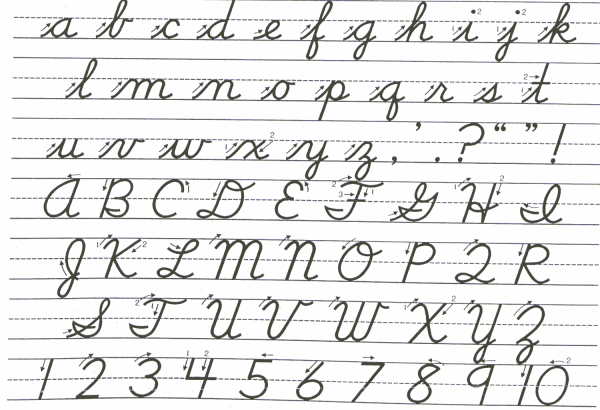Are Computer Keyboards Killing Cursive?

(Wikimedia Commons)
With the rise of computers and electronic communications, educators have all but written off penmanship. And kids who don’t learn to write cursive tend to have trouble reading cursive.
Last week, I went around torturing teenagers. I handed them a copy of a letter, written on stationery from the Executive Mansion and dated April 5, 1864. The letter is addressed to Mrs. Horace Mann.
It was especially challenging for 18-year-old Edwin Robles.
“I’m sorry, I’m really bad at cursive. Like horrible at it," Robles said. "Why? Is this like a test?”
Well, just a fun test. Serious tests – like most school work these days – no longer require cursive. Timothy Shanahan, a professor emeritus from the University of Illinois in Chicago and an expert in literacy curriculum, says his students typically don’t use cursive for note-taking or anything else.
“In fact, the last few years, at the university, even exams tend to be done on computers rather than longhand,” he said.
But Shanahan said it’s vital for elementary students to have a handy way to write down their thoughts, and unless we arm every first grader with an iPad, cursive remains a useful skill.
“There are some studies that show that young children who are able to get words on paper easily become the better writers, which certainly makes a lot of sense,” Shanahan said.
Valerie Hotchkiss is upset about the disappearance of cursive instruction for a different reason: As the director of the Rare Book and Manuscript Library at the University of Illinois in Urbana-Champaign, she’s witnessing a new generation of students who never learned cursive and therefore cannot decipher the precious documents in her care, such as the personal papers of Carl Sandburg, William Maxwell, Gwendolyn Brooks, and the father of science fiction, H.G. Wells, who wrote in what Hotchkiss calls “a cramped little style.”
“It’s clear enough once you get going with it, but … you need to know a little bit about cursive, you need to have practiced reading and writing it, in order to puzzle out a few of his idiosyncrasies and then begin to read it,” she said.
The kids I approached with the one-page letter – including Joele Sydes and Leah Young – struggled through to the end, though none got enough words right to understand that the petition had asked the president if he "would free all slave children."
Robles looked at the word "would" and took his best guess. "I don’t know... like a 'wonder'? I don’t know. Is this ... I can’t. I can’t read it. Few all plan children? Wait, is that plan?" (It was the word slave.)
I let Robles skip to the end.
“Yours truly, Abraham Lincoln. Really?" he asked. "Yeah, well he needs to work on his handwriting.”
Since the new Common Core curriculum doesn’t include instruction in longhand script, the handwriting is on the wall: Cursive is in danger of disappearing.
You can try reading the president's penmanship for yourself with this document, courtesy of the Papers of Abraham Lincoln.
